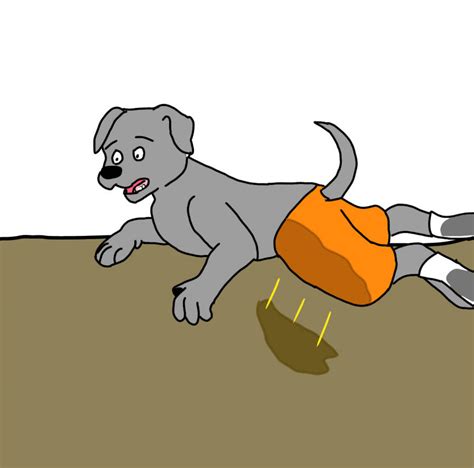
A father was left speechless after his Bully breed dog received eyebrow tattoos, a cosmetic procedure he was completely unaware was planned. Chris Ford, upon returning home, discovered his dog, Contino, sporting dramatically altered eyebrows, courtesy of his wife, Kayla, a licensed tattoo artist.
Chris Ford experienced a mixture of shock and amusement when he saw his Bully breed dog, Contino, sporting freshly tattooed eyebrows. His wife, Kayla, a licensed tattoo artist, had performed the cosmetic procedure while Chris was away, leading to a viral reaction after Chris shared his initial surprise online. The incident has sparked discussions about pet grooming choices, the ethics of cosmetic procedures on animals, and the boundaries of pet ownership.
The Unexpected Brow Transformation
Chris Ford walked into his home expecting the usual warm welcome from his canine companion, Contino. What he encountered instead was a startling sight: Contino now possessed dramatically enhanced eyebrows. Kayla Ford, Chris’s wife and a licensed tattoo artist, decided to use her skills on their Bully breed, a decision she kept secret from Chris.
“I walked in the house, and I was like, ‘What the hell is on your dog’s face?’” Chris recounted in a video that has since gone viral. His initial shock quickly turned to amusement as he processed the situation. The video captured his genuine reaction, making it relatable to many pet owners who have experienced unexpected pet-related surprises.
Kayla, who runs a tattoo studio, saw an opportunity to experiment with her skills on a unique canvas. “I’m a tattoo artist; I tattoo people all day,” Kayla explained. “So I just tattooed my dog.”
The transformation was immediately noticeable. Contino’s face, previously expressive but ordinary, now featured prominent, stylized eyebrows that accentuated his features. The contrast was stark, and the impact was undeniable. Chris, though initially taken aback, admitted that the new eyebrows gave Contino a distinct and somewhat comical appearance.
Viral Reaction and Online Debate
Chris’s video quickly spread across social media platforms, garnering millions of views and sparking a wide range of reactions. Many viewers found the situation hilarious, praising Kayla’s creativity and Chris’s good-natured response. Others, however, expressed concern about the ethics of performing cosmetic procedures on animals, particularly without their consent.
Comments ranged from lighthearted jokes about Contino’s new look to serious discussions about animal welfare. Some users questioned whether the tattooing process was painful or stressful for the dog, while others defended Kayla’s right to do as she pleased with her own pet.
Animal welfare advocates weighed in on the debate, emphasizing the importance of prioritizing an animal’s well-being over aesthetic enhancements. They argued that cosmetic procedures should only be performed when medically necessary, not for purely cosmetic reasons.
Kayla defended her actions, stating that she used safe, pet-friendly tattoo ink and took precautions to ensure Contino’s comfort throughout the process. She emphasized that Contino was not harmed and that the procedure was done out of love and creativity.
Ethical Considerations and Legal Boundaries
The incident raises important ethical questions about the extent to which pet owners can alter their animals’ appearances. While grooming and styling are common practices, more permanent cosmetic procedures like tattooing and piercing fall into a gray area.
In many jurisdictions, there are no specific laws prohibiting cosmetic procedures on animals, as long as the procedures are performed humanely and do not cause unnecessary pain or suffering. However, animal cruelty laws generally prohibit any actions that harm or endanger an animal’s health and well-being.
Veterinarians and animal behaviorists often advise against cosmetic procedures that serve no medical purpose, as they can potentially cause stress, anxiety, and even physical harm to the animal. They argue that animals should not be subjected to unnecessary procedures for the sake of human vanity.
The American Veterinary Medical Association (AVMA) has a policy against cosmetic tail docking and ear cropping in dogs, citing concerns about pain and potential long-term health problems. While the AVMA has not specifically addressed eyebrow tattooing, their stance on other cosmetic procedures reflects a general concern about unnecessary alterations to animals’ bodies.
Contino’s Well-being and Aftercare
A key concern following Contino’s eyebrow transformation is the dog’s well-being. Kayla has been adamant that Contino experienced no pain or distress during the procedure. She used specialized tattoo ink that is considered safe for animals and took steps to minimize any discomfort.
“I made sure he was comfortable and relaxed,” Kayla said. “He actually fell asleep during the process.”
However, even with precautions, there are potential risks associated with tattooing, including allergic reactions, infections, and skin irritation. Proper aftercare is essential to prevent complications and ensure that the tattoo heals properly.
Kayla has been diligent in monitoring Contino’s eyebrows for any signs of adverse reactions. She cleans the area regularly and applies a pet-safe ointment to promote healing. So far, Contino has shown no signs of discomfort or irritation.
Veterinarians recommend that pet owners consult with a veterinarian before considering any cosmetic procedure on their animals. A veterinarian can assess the animal’s overall health and determine whether the procedure is appropriate and safe.
The Broader Context of Pet Grooming Trends
Contino’s eyebrow transformation is part of a broader trend of pet owners seeking creative and unique ways to groom and style their animals. From elaborate haircuts to colorful dyes, pet grooming has become an increasingly popular form of self-expression.
Social media platforms have played a significant role in driving these trends, with pet owners sharing photos and videos of their creatively groomed animals. The desire to stand out and gain attention online has fueled the demand for more extreme and unconventional grooming styles.
However, experts caution that some grooming practices can be harmful to animals. Hair dyes, for example, can contain toxic chemicals that can irritate the skin or cause allergic reactions. Overly tight hairstyles can restrict blood flow and cause discomfort.
Responsible pet owners prioritize their animals’ well-being over aesthetic considerations. They choose grooming styles that are safe, comfortable, and appropriate for the animal’s breed and coat type. They also consult with professional groomers who have experience and expertise in handling animals safely and humanely.
The Future of Pet Cosmetics
The debate surrounding Contino’s eyebrows raises questions about the future of pet cosmetics. As technology advances and new products become available, pet owners will likely have more options for altering their animals’ appearances.
However, the ethical and welfare concerns surrounding these procedures will continue to be a subject of debate. Animal welfare organizations will likely advocate for stricter regulations and greater oversight of the pet cosmetics industry.
Ultimately, the decision of whether or not to perform cosmetic procedures on animals rests with individual pet owners. However, it is essential to make informed decisions based on a thorough understanding of the potential risks and benefits. Pet owners should always prioritize their animals’ well-being and consult with veterinarians and other experts before considering any cosmetic procedure.
Chris and Kayla’s Relationship Dynamics
Beyond the immediate shock and amusement, the eyebrow incident highlights the dynamics within Chris and Kayla’s relationship. The act of Kayla tattooing Contino without Chris’s prior knowledge or consent speaks volumes about communication and decision-making within their household. While Kayla’s artistic impulse is evident, the lack of consultation with Chris raises questions about respecting boundaries and shared responsibilities in pet ownership.
Chris’s reaction, documented and shared online, reveals a blend of surprise and acceptance. His willingness to share the experience, despite his initial bewilderment, suggests a level of comfort and humor within their relationship. However, it also opens their personal life to public scrutiny and commentary, which can be both positive and challenging.
The incident can serve as a microcosm for broader discussions about relationships and individual autonomy. How much say should one partner have in decisions that affect shared responsibilities, such as pet care? Where is the line between creative expression and respecting another person’s feelings and opinions? These are complex questions that many couples grapple with, and the eyebrow incident provides a unique lens through which to examine them.
The Psychology of Pet Ownership
Pet ownership is a complex relationship driven by a variety of psychological factors. For many, pets are more than just animals; they are companions, family members, and sources of unconditional love and support. This emotional bond can lead pet owners to go to great lengths to care for and pamper their animals.
In some cases, this can manifest as a desire to anthropomorphize pets, attributing human characteristics and emotions to them. This can lead to treating pets like children, dressing them in clothes, celebrating their birthdays, and even seeking cosmetic procedures to enhance their appearance.
While there is nothing inherently wrong with loving and caring for pets, it is important to maintain a balanced perspective and avoid projecting human desires and expectations onto them. Animals have their own unique needs and instincts, and it is crucial to respect their natural behaviors and avoid imposing unnecessary procedures or treatments that could compromise their well-being.
The eyebrow incident highlights the psychological complexities of pet ownership, particularly the desire to express creativity and individuality through one’s pets. While Kayla’s intentions may have been harmless, it raises questions about the extent to which pet owners should alter their animals’ appearances for their own amusement or gratification.
The Legal Landscape of Pet Ownership
Pet ownership is governed by a complex web of laws and regulations that vary depending on the jurisdiction. These laws cover a wide range of issues, including licensing, vaccinations, leash laws, animal cruelty, and breed-specific legislation.
In many jurisdictions, pet owners have a legal responsibility to provide their animals with adequate food, water, shelter, and veterinary care. Animal cruelty laws prohibit any actions that cause unnecessary pain, suffering, or death to animals.
The legal status of cosmetic procedures on animals is less clear. While some procedures, such as tail docking and ear cropping, are restricted or banned in certain jurisdictions, others, such as tattooing and piercing, are generally unregulated.
However, even in the absence of specific regulations, pet owners can be held liable for any harm caused to their animals as a result of cosmetic procedures. Veterinarians and animal welfare organizations can report suspected cases of animal cruelty to law enforcement authorities.
The legal landscape of pet ownership is constantly evolving, and it is important for pet owners to stay informed about the laws and regulations in their area. Responsible pet ownership involves not only caring for an animal’s physical and emotional needs but also complying with all applicable laws and regulations.
The Role of Social Media in Shaping Perceptions
Social media has become a powerful force in shaping perceptions of pet ownership and grooming trends. Platforms like Instagram, TikTok, and Facebook are filled with images and videos of creatively groomed animals, inspiring pet owners to experiment with new styles and techniques.
However, social media can also create unrealistic expectations and promote harmful practices. The pressure to create visually appealing content can lead pet owners to prioritize aesthetics over their animals’ well-being.
The eyebrow incident is a prime example of how social media can amplify and distort perceptions of pet ownership. Chris’s video quickly went viral, generating millions of views and sparking a wide range of reactions. While many viewers found the situation humorous, others expressed concern about the ethics of performing cosmetic procedures on animals.
Social media can also be used to educate and inform pet owners about responsible grooming practices. Veterinarians, animal behaviorists, and professional groomers can use social media to share tips and advice on how to care for animals safely and humanely.
Ultimately, it is up to individual pet owners to critically evaluate the information they encounter on social media and make informed decisions about their animals’ care. Responsible pet ownership involves not only following trends but also prioritizing an animal’s health and well-being.
The Importance of Education and Awareness
The eyebrow incident underscores the importance of education and awareness about responsible pet ownership. Many pet owners may be unaware of the potential risks and ethical considerations associated with cosmetic procedures.
Veterinarians, animal welfare organizations, and professional groomers can play a crucial role in educating pet owners about responsible grooming practices. They can provide information about the potential risks of cosmetic procedures, the importance of prioritizing an animal’s well-being, and the legal and ethical considerations involved.
Educational campaigns can also target specific grooming trends, such as hair dyeing and extreme haircuts, to raise awareness about the potential harm they can cause to animals. These campaigns can emphasize the importance of choosing safe and comfortable grooming styles that are appropriate for the animal’s breed and coat type.
By increasing education and awareness, it is possible to promote more responsible pet ownership and ensure that animals are treated with respect and compassion.
The Future of Bully Breeds
Bully breeds, like Contino, often face unique challenges and stigmas. These dogs are frequently misunderstood and unfairly judged based on their appearance and reputation.
Responsible Bully breed owners are committed to educating the public about the true nature of these dogs and advocating for fair treatment and responsible breeding practices. They work to dispel myths and stereotypes and promote positive interactions between Bully breeds and the community.
The eyebrow incident, while seemingly trivial, can also contribute to the negative perception of Bully breeds. By portraying Contino in a comical or unconventional light, it reinforces the idea that these dogs are somehow different or abnormal.
Responsible Bully breed owners strive to present their dogs in a positive and respectful manner, showcasing their intelligence, loyalty, and gentle nature. They advocate for responsible ownership practices, such as training, socialization, and responsible breeding.
The future of Bully breeds depends on changing public perceptions and promoting responsible ownership. By working together, Bully breed owners, animal welfare organizations, and the community can create a more inclusive and accepting environment for these misunderstood dogs.
The Cultural Significance of Pets
Pets have become increasingly integrated into modern society and hold significant cultural importance. They are often seen as members of the family and play a vital role in providing companionship, emotional support, and even physical assistance.
The cultural significance of pets is reflected in the growing pet industry, which includes a wide range of products and services, such as pet food, toys, grooming supplies, veterinary care, and pet insurance. The pet industry is a multi-billion dollar industry that continues to grow as more and more people embrace pet ownership.
The eyebrow incident, while seemingly trivial, can also be viewed through the lens of cultural significance. It reflects the growing trend of pet owners treating their animals like human companions and seeking ways to express their creativity and individuality through their pets.
As pets continue to play an increasingly important role in society, it is essential to promote responsible pet ownership and ensure that animals are treated with respect and compassion.
Conclusion
The story of Contino’s eyebrow transformation is a multifaceted one, touching on themes of pet ownership, ethical considerations, social media influence, and relationship dynamics. While the initial reaction was one of surprise and amusement, the incident sparked a broader conversation about the responsibilities and boundaries of pet ownership.
Ultimately, the well-being of the animal should always be the primary concern. Whether it’s grooming, medical care, or cosmetic enhancements, every decision should be made with the pet’s best interests at heart.
Frequently Asked Questions (FAQ)
-
Was the tattoo procedure safe for the dog, Contino?
- According to Kayla, she used pet-friendly tattoo ink and ensured Contino was comfortable and relaxed during the process. However, veterinarians generally recommend against cosmetic procedures without medical necessity due to potential risks like allergic reactions or infections. It is always advised to consult with a veterinarian before considering such procedures.
-
Did Chris Ford approve of his wife tattooing their dog’s eyebrows?
- Chris was initially unaware and surprised by the eyebrow tattoos. His reaction, captured in a viral video, showed a mix of shock and amusement. While he didn’t explicitly disapprove, it was clear he was not consulted beforehand.
-
Are there any laws against tattooing pets?
- In many jurisdictions, there are no specific laws prohibiting cosmetic procedures on animals as long as they are performed humanely and don’t cause unnecessary suffering. However, animal cruelty laws generally prohibit actions that harm an animal’s health and well-being.
-
What kind of reactions did the video of Contino’s eyebrow transformation receive online?
- The video went viral, receiving millions of views and diverse reactions. Some viewers found it hilarious and praised Kayla’s creativity, while others expressed concerns about the ethics of cosmetic procedures on animals.
-
What should pet owners consider before getting their pets cosmetic procedures?
- Pet owners should prioritize their animal’s well-being over aesthetic enhancements. They should consult with a veterinarian to assess the animal’s overall health and determine if the procedure is safe and appropriate. It’s also essential to consider the potential risks, stress, and anxiety the procedure might cause the animal.









